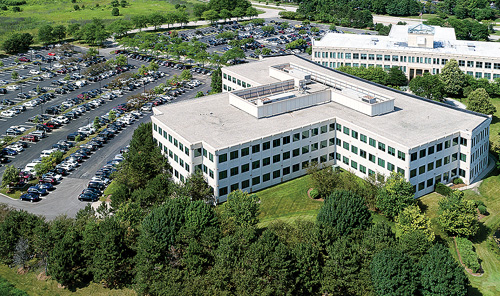Trends in Office and Industrial Parks
Allowing employees to continue to work remotely and possible moves to the less densely populated suburbs are among the factors that will affect corporate real estate in 2021.
Q4 2020

Across the nation, the demand for suburban office parks is rising as more skilled workers move back to suburbs, due to concerns about housing costs and quality of education — they also feel safer from COVID-19 and the civil unrest that is happening in some larger cities.
“The most notable shift is toward lower-intensity spaces, where getting into and out of buildings can be done without close contact to others,” says Mark Stapp, professor of Real Estate at Arizona State University in Phoenix.
This trend is compelling more developers to consider older office parks in suburban areas as attractive opportunities for redevelopment — especially as targets for millennials and businesses that hope to attract millennials.
“The pandemic tends to boost this demand,” says Zhou Yang, professor of Economics at Robert Morris University in Pittsburgh, Pennsylvania. “A recent NAIOP Research Foundation study shows that developers can attract new tenants and boost profitability by modernizing older parks with new uses and amenities, especially for those buildings with a single large tenant and office parks with large surface parking lots and low occupancy rates.”
Re-Design or Retro-Fit?
Before COVID-19, building owners and employers never thought they would have to deal with disease control and prevention. To stay competitive, they must now retrofit older buildings or design new buildings that create safe space for tenants or employees. As a result, real estate developers are making changes to new/proposed and existing buildings. “Many buildings still in design or pre-construction have been reassessed to accommodate public health concerns,” says Stapp.
In the wake of the pandemic, architects and designers are considering innovative ways to bring the outdoors in to achieve better health and well-being. Most redesign is interior and involves specifying systems such as a fully touchless environment, including doors/openings, bathrooms, and lighting. Interior spaces have been reconsidered to accommodate social distancing and separation as well as HVAC systems to increase filtration. “WELL building certification is becoming an important consideration for marketability reasons,” adds Stapp.
However, office buildings still need to allow people to socialize and collaborate. Shared spaces that fulfill this goal can bring energy and growth to the workplace. In the wake of the pandemic, architects and designers are considering innovative ways to bring the outdoors in to achieve better health and well-being. For example, architects have integrated biophilic designs in modern workplaces to promote productivity and creativity.
“The desire for improved air quality, less-dense environments, and better ways to prevent the spread of the disease is prompting developers to rethink design fundamentals,” indicates Yang. “These include configuration of elevators to safely and efficiently move workers to their offices, sheltered balconies or rooftop decks, and meeting rooms with large windows that can be opened.”
Less Space, Lower Terms
Office vacancy rates have increased significantly as employees socially distance and work at home. This trend will likely continue to rise as new waves of COVID-19 sweep across the country.
“In places such as New York City, the impact has been substantial,” states Timothy H. Savage, a professor at the Schack Institute of Real Estate at New York University in New York City. “Current occupancy — albeit with existing leases — may be as low as 10 percent or 20 percent, implying vacancy of 80 percent.”
Remote working may become part of the “new normal” for some businesses, which means they will need less office space. Future market conditions will remain highly volatile, depending on economic and public health conditions.
At the beginning of the pandemic, notes Yang, landlords and tenants studied their leases to see if there were stipulations that protected tenants during the pandemic. As the pandemic carries on, rental income for commercial property owners continues to decline, threatening the viability of their assets.
“To avoid litigation, landlords and tenants are seeking short-term as well as long-term solutions that will work for both parties,” says Yang. “Tenants have been seeking rent relief with modified leases including rent abatements, rent deferments, or lease restructuring. Tenants — hoping to have the ability to scale up quickly — are looking for shorter and less costly leases so they can re-adjust their square footage much faster in response to changes in the market.”
As the pandemic carries on, rental income for commercial property owners continues to decline, threatening the viability of their assets. Tenants also seek improvements and upgrades that will make their offices safer — these, however, are expensive for building owners to add, especially as their rental incomes fall from increased vacancies. “It’s harder to amortize those costs, so longer-term leases are desired by owners, but tenants are shrinking space and looking for more flexibility, which includes shorter lease terms due to uncertainty,” explains Stapp. “These conflicting needs make negotiation interesting.”
“The industry has recognized the option value of short-term leases,” Savage adds. “Such leases provide tenants with valuable flexibility, in terms of space and time, and landlords with the ability to use real-time pricing to reflect the scarcity of space.”
Effect on Manufacturers
Manufacturing operations have been greatly affected by the pandemic. “According to the Census Bureau, more than 70 percent of small businesses in the manufacturing sector reported large or moderate negative impacts resulting from the pandemic between late April and mid-September in 2020,” says Yang. “With disruptions in supply chain and an urgent need to remotely coordinate teams and keep operations running smoothly, manufacturers are seeking technology to optimize the means of production.”
For example, in addition to basic safety precautions, manufacturers are paying more attention to traceability of equipment uses. This helps improve supply chain visibility in the future as more manufacturers track their activities throughout the manufacturing process. Regarding enterprise resource planning (ERP) systems, manufacturers are adding agile applications that allow them to respond rapidly to changes in work environment; other improvements allow them to consolidate data platforms and add tangent functions on top of their existing model, allowing quicker reactions to future disruptions.
The pandemic has also prompted a renewed interest in both reshoring and near-sourcing to mitigate supply chain disruptions. Investment in digital, real-time Industry 4.0 technologies will help manufacturers achieve these goals much more quickly.
Moving Ahead to 2021
One of the trends that will likely continue, even post-coronavirus, is the migration away from big cities, which will impact where business is done.
One of the trends that will likely continue, even post-coronavirus, is the migration away from big cities, which will impact where business is done. “Employers will need to follow workers, and if those workers want places that are more spacious, rely more heavily on car travel, and [desire] ample access to single-family housing, then that is where business will be conducted,” says Stapp. Low density, new infrastructure, and lack of dependence on public transit will also be attractive features.”
The full impact of new employment practices such as remote working has yet to be determined — some companies will likely continue the practice, even after they are comfortable bringing employees back to the office. In turn, maintaining more workers off-site will reduce the need for space, which will likely lead to higher vacancy rates.
Changes in government policies, especially macroeconomic policy, will also play an important role in shaping future office-space trends. Behavioral changes in consumption and work habits driven by the pandemic will likely have long-term impacts on the demand for office and industrial spaces. The longer COVID-19 persists, the more transformative and lasting the changes in business practices will become, where some are elevated to “standard operating procedure” and become part of the corporate culture.
Project Announcements
ContiTech Expands Mount Pleasant, Iowa, Production Operations
12/07/2025
Modular Closets Plans Kernersville, North Carolina, Production Operations
12/07/2025
QMP Plans Walterboro, South Carolina, Operations
12/06/2025
Ninth Avenue Foods Plans Longview, Texas, Production Operations
12/06/2025
LayerZero Power Systems Expands Streetsboro, Ohio, Manufacturing Operations
12/06/2025
BioStem Technologies Plans Boca Raton, Florida, Headquarters Operations
12/06/2025
Most Read
-
Rethinking Local Governments Through Consolidation and Choice
Q3 2025
-
First Person: Filter King’s Expansion Playbook
Q3 2025
-
Rethinking Auto Site Strategy in the Age of Tariffs and Powertrain Shifts
Q3 2025
-
Lead with Facts, Land the Deal
Q3 2025
-
How Canada Stays Competitive
Q3 2025
-
America’s Aerospace Reboot
Q3 2025
-
The Permit Puzzle and the Path to Groundbreaking
Q3 2025



